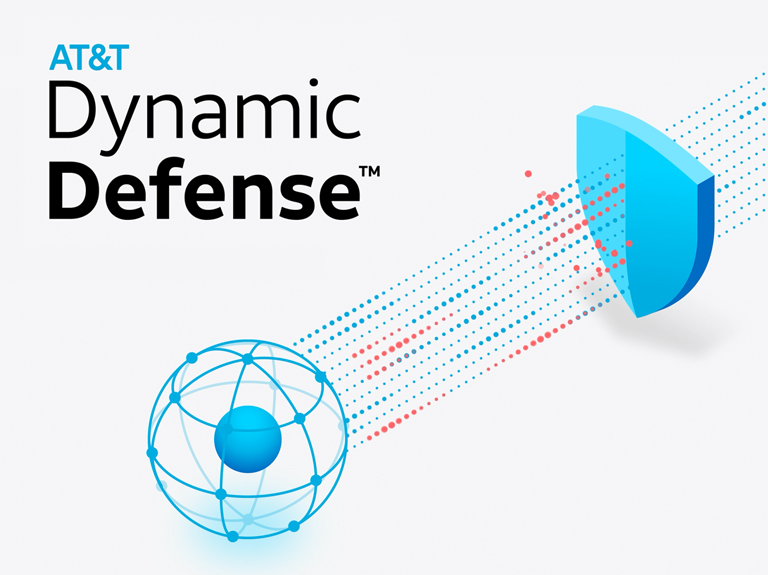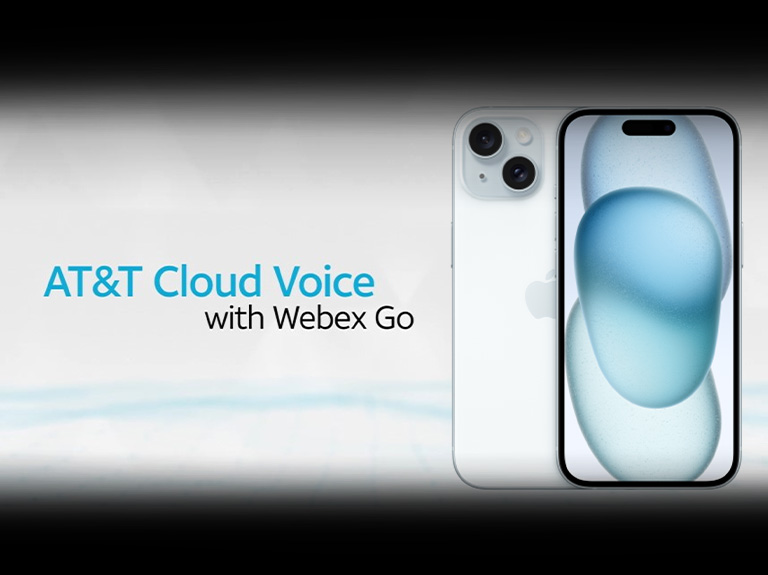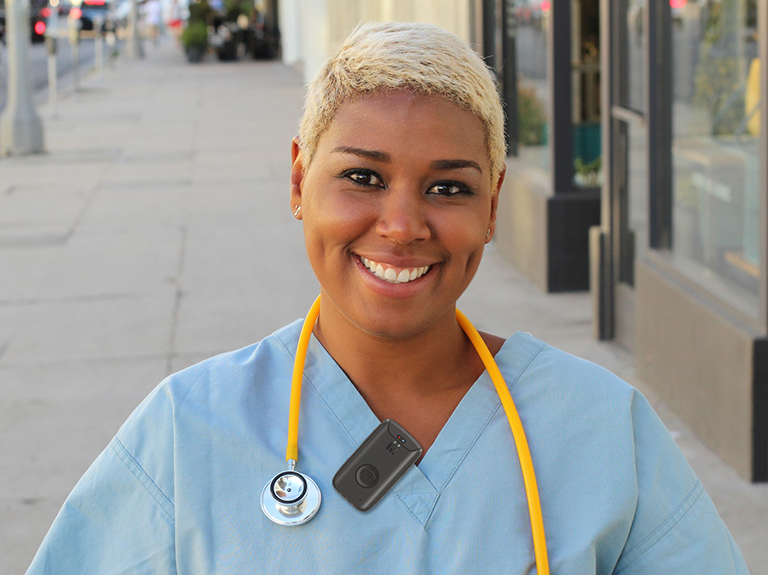Stick with me because this next sentence isn’t a typo, I promise.
Things have things to say. And AT&T knows it better than anyone. During the fourth quarter of 2020, AT&T connected more than 4 million IoT devices – and to give a sense of scale, that amounts to one device every 1.5 seconds. It was the most we’ve added to our network in any given quarter in our history. And the fourth quarter wasn’t the only thing noteworthy: in 2020, AT&T connected nearly 15 million IoT devices. That’s more than in any previous year in our history.
In total, we have more than 80 million connected devices on our networks as of the fourth quarter. Everything from dog collars, to employee safety sensors, utility meters, remote healthcare and home security systems are connected to cellular networks. But scale is only part of the story. All these connected things point to this: businesses are recognizing the incredible opportunity to materially improve their operations, or create entirely new revenue streams, using IoT technology.
The promise of IoT hyperconnectivity – that fast-approaching world in which virtually anything can be connected – isn’t only about scale. It’s also about clarity: a comprehensible chorus of connected devices that can help drive business outcomes in any industry.
COVID-19 Impact
Truth is that every industry you can think of is at an inflection point revealed in part by the continued growth of connected things. On our network alone, we see more than 1 million connections in each of the automotive, consumer electronics, fleet, healthcare, insurance, industrial IoT/manufacturing, public sector, retail, and security sectors.
The COVID-19 pandemic has altered, and in many cases accelerated, how businesses approach IoT solutions. As businesses recover from COVID-19 curtailed operations, many will increasingly turn to IoT deployments to innovate, become more efficient, reduce their environmental impact, and scale their operations for their next chapter.
The global market intelligence firm IDC estimates that by 2024, the overall number of connected IoT devices worldwide will increase to over 39.1 billion, and by 2025, that number will be almost 42 billion1. Likewise, IoT spending was projected to reach $707.2 billion in 2020, a 7.3% increase over the $659.2 billion spent in 2019, and to return to double-digit growth with COVID-19 recovery, surpassing $1.1 trillion in 2024.
And don’t overlook the fact that within this massive increase there will be an ever-greater amount of data that will need to be collected, analyzed, and protected. After all, that’s the whole point of IoT: to give voice to things and to be able to hear and respond to what they have to say.
As a market leader in IoT, AT&T is paying close attention to the direction where these businesses and others want to move as they continue their transformation journeys.
Here are 5 things I’ve seen businesses seeking – and what we’re offering in turn:
Global Connectivity
Networks are evolving, expanding, and proliferating. All the G’s keep marching toward a more refined future – 3G, 4G, 5G. And diverse business needs can be served by diverse network technologies. Certainly, businesses need connectivity. And they need it across all aspects of their operations. Often, this means various networking technologies working in concert with one another to drive unique outcomes.
And that’s why we’ve built on our Global IoT offerings (available in more than 200 countries and territories) and ramped LTE-M and NB-IoT Low-Power Wide-Area (LPWA) networks to enhance indoor and subterranean coverage and extend battery life at lower costs for lower bandwidth requirements. Both networks will continue to operate alongside 5G, which will enable smart factories, automated driving, remote surgery, and a revolutionized Supply Chain as part of the next generation of IoT.
We now offer nationwide coverage for the highly secure LTE-M and NB-IoT networks designed for IoT applications across all 50 states and with the ability to support customers across 3 continents.
For example, we are providing cellular connectivity for Roost to enable homeowners and insurance companies to receive water leak and frozen pipe alerts through smart sensors over our LTE-M and NB-IoT networks. AT&T LTE-M cellular network enables Bodyport to shift medical care from hospital to home and reactive to predictive with a smart scale that transmits patients’ cardiovascular data to remote care teams in near real time.
And as we build out FirstNet® – the only nationwide network built specifically for America’s first responders – we are also expanding the coverage of both LTE-M and NB-IOT.
Cloud computing, artificial intelligence and edge computing will help handle the data volumes generated by IoT as 5G boosts network connectivity with improved speeds and lower latency. Network slicing will allow enterprises to build multiple use cases on the same network interface.
Fleets of the Future and Tracking ‘Things’ Anywhere
One thing that COVID-19 made clear is how critical supply chains are for virtually every potential transaction in modern business. And more often, supply chain resiliency means data management. As we look ahead, fleet data will r help inform and accelerate the transition to electric and alternative fuel vehicles, charging station locations, and even predictive maintenance. All of this modernizes logistics efficiency and helps drive the transition to a Net Zero economy of dramatically lower emissions.
AT&T Fleet solutions provide customers an all-in-one fleet, asset and mobile-worker tracking and management solution from a single platform to help control costs, improve driver safety and support regulatory compliance.
From skyscraper tower cranes to harvesters to underground drills, we can help businesses monitor their assets. For example, we’re currently providing the network connectivity for many of the shipping companies that are integral to the distribution of the COVID-19 vaccine.
Just one example. Vendon uses AT&T IoT solutions and highly secure connectivity to help their customers remotely manage coffee and vending machines globally, providing valuable insights about consumer behavior and machine and product performance in near real-time.
As you can imagine, one of the biggest challenges with getting the vaccine to as many people as possible is logistics. With AT&T IoT Asset Tracking Solutions, the location and the condition of the vaccine could be monitored and tracked from production to clinic in near real time, giving our customers peace of mind as they work toward mass distribution.
The Living Room on Wheels is Here
As car manufacturers increased their production following COVID-19 plant closures, the pent-up demand for new connected vehicles resulted in an additional 3 million connected cars on our 4G LTE network in the fourth quarter of 2020.
We now connect 33 of the top global vehicle brands totaling 43.5 million connected cars on the AT&T network in the fourth quarter of 2020.
I’m blown away by what connected cars can already do. Connected car owners can turn their vehicles into Wi-Fi hotspots, connecting smartphones and tablets for email, browsing and gaming, and get unique access to premium content across news, sports and family entertainment through the WarnerMedia RIDE™ streaming service.
As the exclusive cellular provider for the American Center for Mobility, a smart mobility test center for connected car technology, we’ve built out a private 4G LTE cellular network and are adding 5G for advanced research and testing capabilities.
Connectivity-Plus
For all the incredible outcomes networking technology can help drive for businesses, one thing remains as true today as it’s always been: businesses need to be able to focus on their business. As the industry matures and becomes more dynamic, businesses need more than connectivity solutions – they need strategic insight and management services. They need providers with depth of expertise and breadth of experience who can help them reap the benefits of IoT without losing focus on their core business.
Through our IoT Professional Services Organization, we’re helping business customers harness the power of IoT from discovery, strategy and design to determine what needs to be connected through solutions on our highly secure cellular networks.
For example, we manage the AT&T Staff Alert, an integrated device enabling hotel workers to summon assistance in threatening situations, for top hospitality chains, helping to keep workers in more than 150,000 hotel rooms across the country.
And as our customers feel increased pressure to address climate change – from competitors, investors, customers, employees, regulators, and Mother Nature herself - AT&T’s IoT services are helping businesses meet their emissions reduction goals. We are helping our customers see opportunities to reduce emissions by reducing wasted electricity, fuel, water, and raw materials.
For example, ChargePoint uses AT&T connectivity to help businesses scale access to electric vehicle (EV) charging stations and reduce greenhouse gas emissions.
We have also sourced, staged, configured, and connected more than 250,000 IoT devices globally for medical device manufacturers to help advance connected health care.
And we’re helping businesses manage a seamless transition from the 3G networks connecting millions IoT devices to our 4G or LTE-M networks to take full advantage of the capabilities they provide.
Keeping IoT Innovation Safe and Highly Secure
The rush to meet the growing demand for IoT devices risks favoring functionality over security, given that connected and unprotected devices are vulnerable to hacking and attack.
Major threats include device identity, device security, data integrity and hacker use of IoT devices as threat vectors into IT systems.
5G will usher in a new era of connectivity – and that means more endpoints for businesses to secure.
So robust cybersecurity measures are critical to making it safer for businesses to innovate through IoT.
AT&T follows a multi-layered IoT security strategy and end-to-end security for millions of IoT devices. We monitor the security of our network 24/7 with security employees located in 15 countries and 37 states – helping keep our network, company, and customers safe from cyber threats.
Through our cybersecurity consultants group, we’re helping businesses develop customized security solutions that fit their unique IoT needs to enable the next generation of IoT.
IoT has the potential to drive incredible value for businesses. Exponential improvements in revenue, cost savings, and efficiency will one day be delivered by inline exponential growth of true assets. Where a business can turn “things” into intelligence, amazing things are possible.
What are some of the things your business could connect – and how might they help drive outcomes good for your stakeholders, employees, and customers?
1 IDC, Worldwide Internet of Things Forecast Update, 2020–2024, Doc #US47434121, February 2021.
FirstNet and the FirstNet logo are registered trademarks and service marks of the First Responder Network Authority. All other marks are the property of their respective owners.


